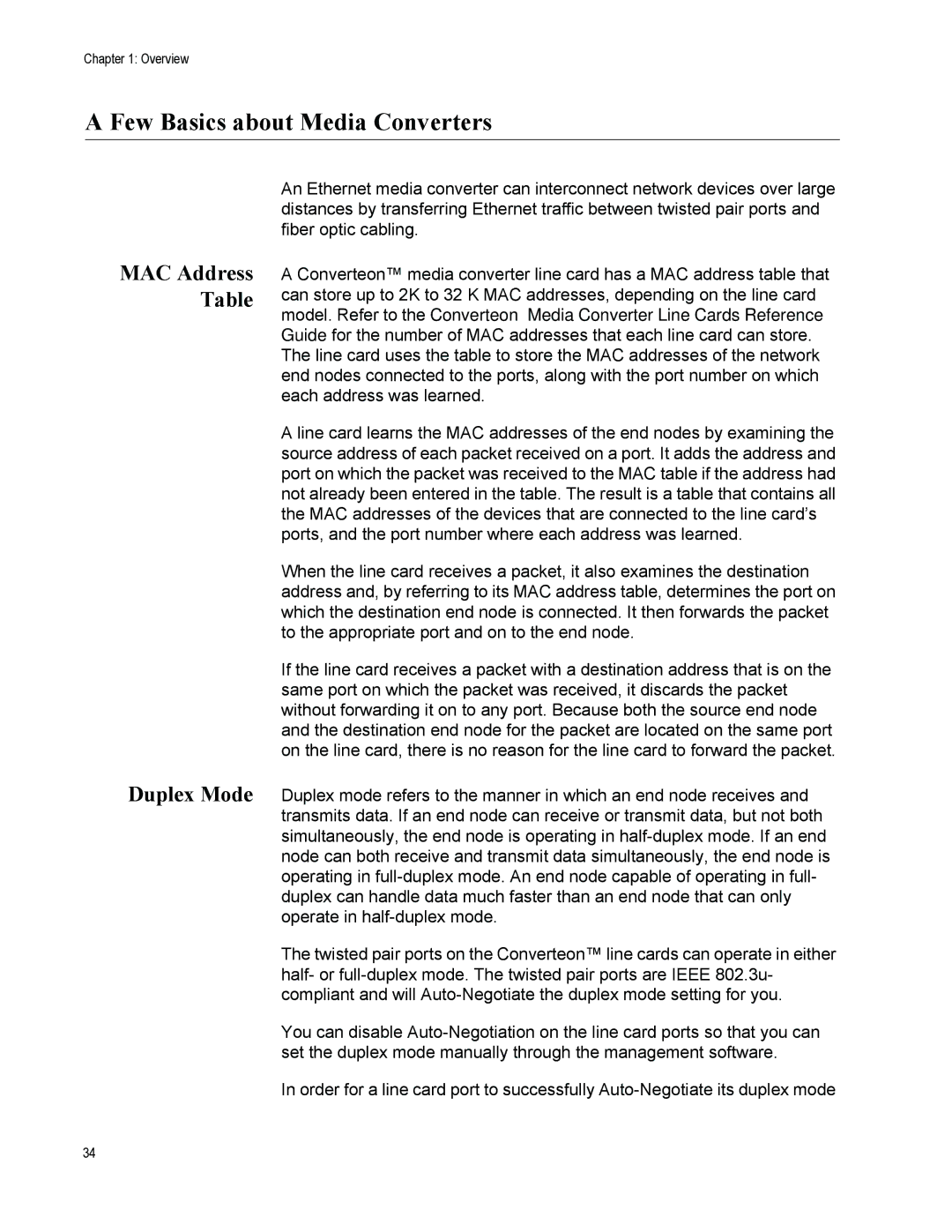Chapter 1: Overview
A Few Basics about Media Converters
MAC Address Table
Duplex Mode
An Ethernet media converter can interconnect network devices over large distances by transferring Ethernet traffic between twisted pair ports and fiber optic cabling.
A Converteon™ media converter line card has a MAC address table that can store up to 2K to 32 K MAC addresses, depending on the line card model. Refer to the Converteon™ Media Converter Line Cards Reference Guide for the number of MAC addresses that each line card can store. The line card uses the table to store the MAC addresses of the network end nodes connected to the ports, along with the port number on which each address was learned.
A line card learns the MAC addresses of the end nodes by examining the source address of each packet received on a port. It adds the address and port on which the packet was received to the MAC table if the address had not already been entered in the table. The result is a table that contains all the MAC addresses of the devices that are connected to the line card’s ports, and the port number where each address was learned.
When the line card receives a packet, it also examines the destination address and, by referring to its MAC address table, determines the port on which the destination end node is connected. It then forwards the packet to the appropriate port and on to the end node.
If the line card receives a packet with a destination address that is on the same port on which the packet was received, it discards the packet without forwarding it on to any port. Because both the source end node and the destination end node for the packet are located on the same port on the line card, there is no reason for the line card to forward the packet.
Duplex mode refers to the manner in which an end node receives and transmits data. If an end node can receive or transmit data, but not both simultaneously, the end node is operating in
The twisted pair ports on the Converteon™ line cards can operate in either half- or
You can disable
In order for a line card port to successfully
34
